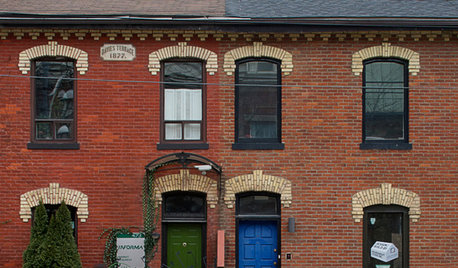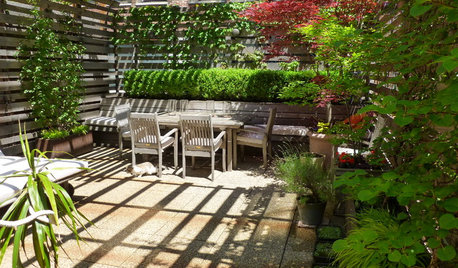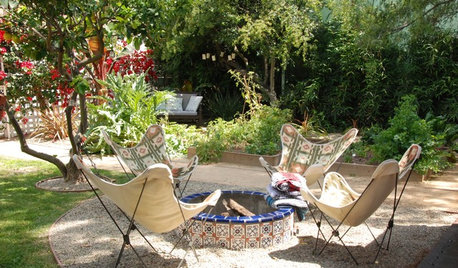blank slate and irrigation canal
strayarrow
13 years ago
Related Stories

HOUZZ TOURSMy Houzz: An 1880 Home Becomes a Live-Work Design Lab
Art and original wallpapers cover the walls of this Pittsburgh rental, but the furniture and architectural details are just as eye catching
Full Story
ARCHITECTUREWant to Live by the Water? What You Need to Know
Waterside homes can have amazing charm, but you'll have to weather design restrictions, codes and surveys
Full Story
FRONT YARD IDEASBefore and After: Front Lawn to Prairie Garden
How they did it: Homeowners create a plan, stick to it and keep the neighbors (and wildlife) in mind
Full Story
FARM YOUR YARDHouzz Call: Home Farmers, Show Us Your Edible Gardens
We want to see where your tomatoes, summer squashes and beautiful berries are growing this summer
Full Story
FRONT DOOR COLORSFront and Center Color: When to Paint Your Door Blue
Who knew having the blues could be so fun? These 8 exterior color palettes celebrate sunny-day skies to electric nights
Full Story
LANDSCAPE DESIGNIs It Time to Consider Fake Grass?
With more realistic-looking options than ever, synthetic turf can be a boon. Find the benefits and an installation how-to here
Full Story
LANDSCAPE DESIGNWhat Kind of Gardener Are You? Find Your Archetype
Pick from our descriptions to create a garden that matches your personality and tells your story
Full Story
HOUZZ TOURSMy Houzz: A Modern-Day Homestead Brings a Family Together
Their 5-acre Washington property, with sports court, swings, pizza oven and gardens, is a labor of love and communal playspace
Full Story
LANDSCAPE DESIGNDiscover an Intimate Garden Nestled on a Manhattan Rooftop
As rare as a taxi on a rainy day, this New York City escape balances privacy with a gentle embrace of city sights
Full Story
HOUZZ TOURSMy Houzz: An Outdoor Entertaining Paradise in Long Beach
A 1929 Spanish-style home’s open layout and multiple courtyards provide lots of room for a California couple to socialize
Full Story







digit
david52 Zone 6
Related Professionals
Wrentham Landscape Architects & Landscape Designers · Edmond Landscape Contractors · Blue Springs Landscape Contractors · Deerfield Beach Landscape Contractors · El Sobrante Landscape Contractors · Garland Landscape Contractors · Gloucester Landscape Contractors · Hawaii Landscape Contractors · Huntington Landscape Contractors · Live Oak Landscape Contractors · North Potomac Landscape Contractors · Woodbury Landscape Contractors · Elmhurst Solar Energy Systems · Montclair Solar Energy Systems · Torrington Solar Energy Systems